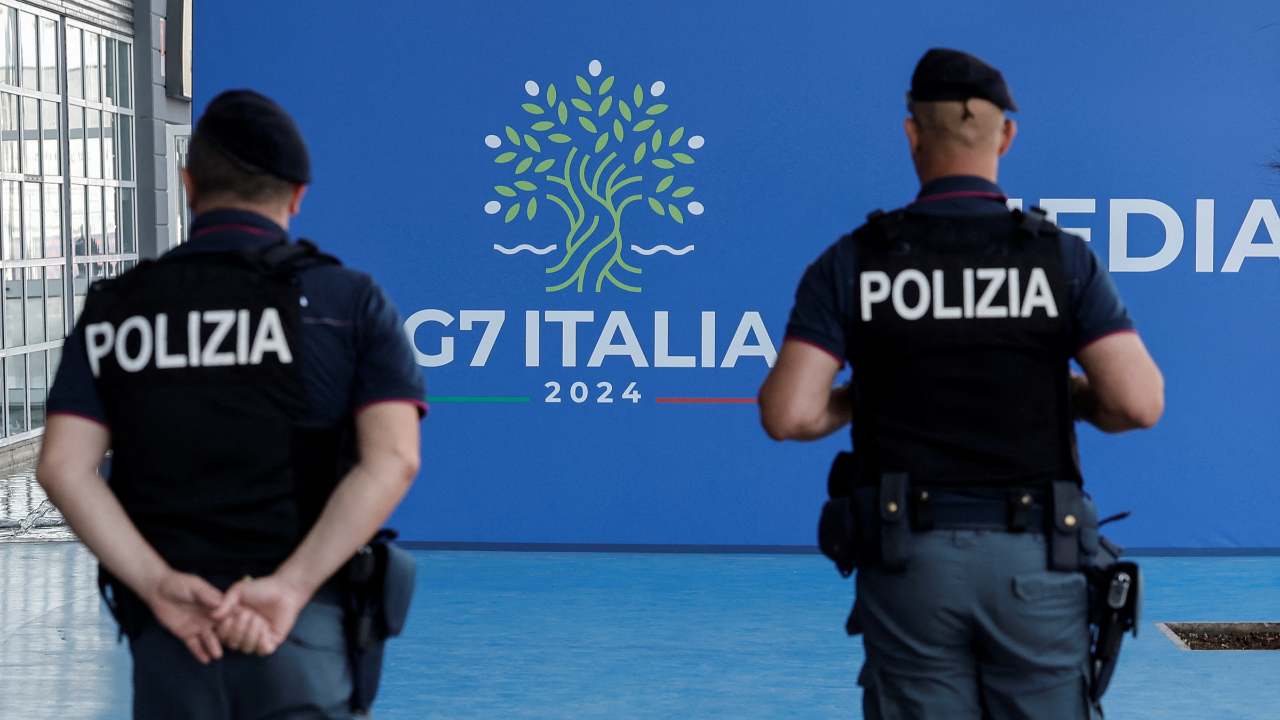NEW DELHI: G7 leaders have reportedly reached a consensus to allocate $50 billion to support war-torn Ukraine by the end of the current year, according to a statement from the French presidency on Wednesday.
The funds will be sourced from Russian assets that have been frozen.
“We have an agreement,” a presidency official said, ahead of a G7 summit in Italy that will focus on backing Kyiv’s fight against Russia.
The United States has proposed providing Ukraine with a substantial loan of $50 billion, using the interest on the 300 billion euros ($325 billion) of Russian central bank assets frozen by the G7 and the EU after Russia’s invasion of Ukraine as collateral.
How it could work?
The EU and the G7 have frozen approximately 300 billion euros of Russian central bank assets and have also seized private assets such as yachts, real estate, and other property from oligarchs close to Russian President Vladimir Putin. The Ukrainian think tank Institute of Legislative Ideas estimates the total value of these assets at $397 billion, while the World Bank estimates that rebuilding the war-torn country will cost more than $486 billion.
The United States initially advocated for direct confiscation of Russian assets but has now aligned with the European plan to use the interest generated by the frozen assets.
A significant portion of the frozen assets is held in the EU, with around 185 billion euros frozen by Euroclear, an international deposit organization based in Belgium. This gives Europe a crucial role in deciding whether and how to use the blocked assets. Britain, Austria, Japan, Switzerland, and the United States hold the remaining assets.
International law prohibits the West from confiscating the Russian central bank’s money. To circumvent this, EU countries looking to help Ukraine agreed early last month to seize the interest generated by frozen Russian assets instead, which is estimated to be between 2.5 and 3.0 billion euros per year. G7 finance ministers also agreed in principle at the end of May to front-load the money by using expected future profits generated by the frozen assets, without specifying how it would work.
What are the challenges?
Several questions remain, such as how the risk would be shared between the US and Europe, how interest rates might change over time, and who would issue the debt. Initially, there was talk of a loan issued solely by the US, but this has expanded to the possibility of other G7 countries participating in risk-sharing.
The plan faces several challenges, including the need for unanimous approval from EU member states to renew sanctions against Russia every six months.
There are also concerns about what would happen if peace was declared and the assets were unfrozen, as well as the potential for third countries like China to reduce investments in the West for fear of asset seizure.
Additionally, Russia is threatening retaliation, with Putin signing a decree in May authorizing the confiscation of assets belonging to the US or “associated” individuals in Russia.
The funds will be sourced from Russian assets that have been frozen.
“We have an agreement,” a presidency official said, ahead of a G7 summit in Italy that will focus on backing Kyiv’s fight against Russia.
The United States has proposed providing Ukraine with a substantial loan of $50 billion, using the interest on the 300 billion euros ($325 billion) of Russian central bank assets frozen by the G7 and the EU after Russia’s invasion of Ukraine as collateral.
How it could work?
The EU and the G7 have frozen approximately 300 billion euros of Russian central bank assets and have also seized private assets such as yachts, real estate, and other property from oligarchs close to Russian President Vladimir Putin. The Ukrainian think tank Institute of Legislative Ideas estimates the total value of these assets at $397 billion, while the World Bank estimates that rebuilding the war-torn country will cost more than $486 billion.
The United States initially advocated for direct confiscation of Russian assets but has now aligned with the European plan to use the interest generated by the frozen assets.
A significant portion of the frozen assets is held in the EU, with around 185 billion euros frozen by Euroclear, an international deposit organization based in Belgium. This gives Europe a crucial role in deciding whether and how to use the blocked assets. Britain, Austria, Japan, Switzerland, and the United States hold the remaining assets.
International law prohibits the West from confiscating the Russian central bank’s money. To circumvent this, EU countries looking to help Ukraine agreed early last month to seize the interest generated by frozen Russian assets instead, which is estimated to be between 2.5 and 3.0 billion euros per year. G7 finance ministers also agreed in principle at the end of May to front-load the money by using expected future profits generated by the frozen assets, without specifying how it would work.
What are the challenges?
Several questions remain, such as how the risk would be shared between the US and Europe, how interest rates might change over time, and who would issue the debt. Initially, there was talk of a loan issued solely by the US, but this has expanded to the possibility of other G7 countries participating in risk-sharing.
The plan faces several challenges, including the need for unanimous approval from EU member states to renew sanctions against Russia every six months.
There are also concerns about what would happen if peace was declared and the assets were unfrozen, as well as the potential for third countries like China to reduce investments in the West for fear of asset seizure.
Additionally, Russia is threatening retaliation, with Putin signing a decree in May authorizing the confiscation of assets belonging to the US or “associated” individuals in Russia.

